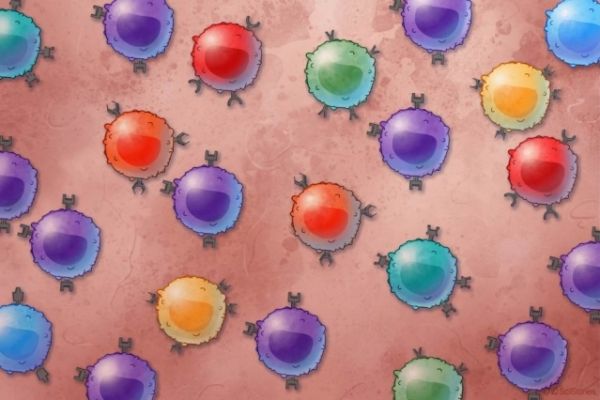When your immune system is exposed to a vaccine, an allergen, or an infectious microbe, subsets of T cells that can recognize a foreign intruder leap into action.
When your immune system is exposed to a vaccine, an allergen, or an infectious microbe, subsets of T cells that can recognize a foreign intruder leap into action. Some of these T cells are primed to kill infected cells, while others serve as memory cells that circulate throughout the body, keeping watch in case the invader reappears.
MIT researchers have now devised a way to identify T cells that share a particular target, as part of a process called high-throughput single-cell RNA sequencing. This kind of profiling can reveal the unique functions of those T cells by determining which genes they turn on at a given time. In a new study, the researchers used this technique to identify T cells that produce the inflammation seen in patients with peanut allergies.
In work that is now underway, the researchers are using this method to study how patients’ T cells respond to oral immunotherapy for peanut allergies, which could help them determine whether the therapy will work for a particular patient. Such studies could also help guide researchers in developing and testing new treatments.
“Food allergies affect about 5 percent of the population, and there’s not really a clear clinical intervention other than avoidance, which can cause a lot of stress for families and for the patients themselves,” says J. Christopher Love, the Raymond A. and Helen E. St. Laurent Professor of Chemical Engineering and a member of MIT’s Koch Institute for Integrative Cancer Research. “Understanding the underlying biology of what drives these reactions is still a really critical question.”
Read more at Massachusetts Institute of Technology
Image: MIT researchers have developed a method to isolate T cells that bind to different targets and then sequence their RNA. CREDIT: SciStories LLC




